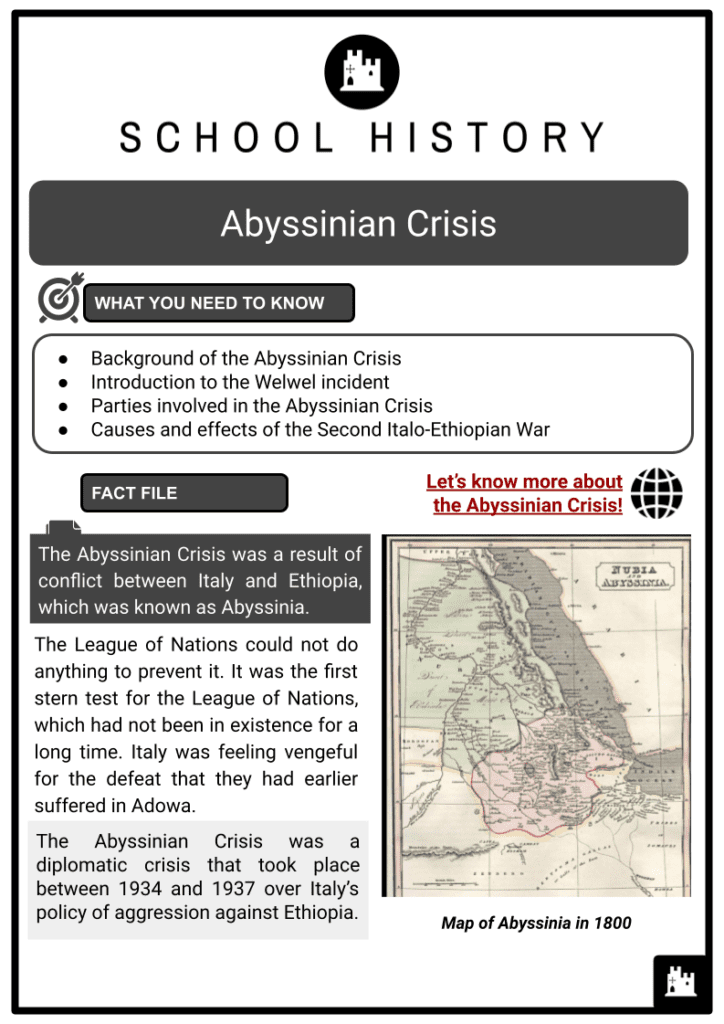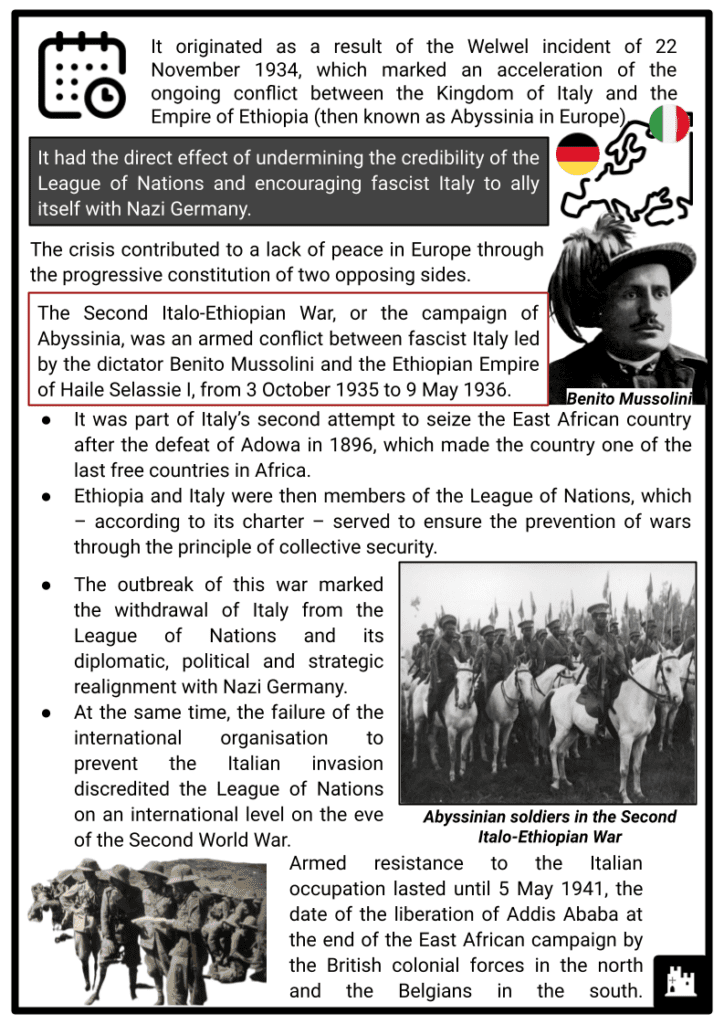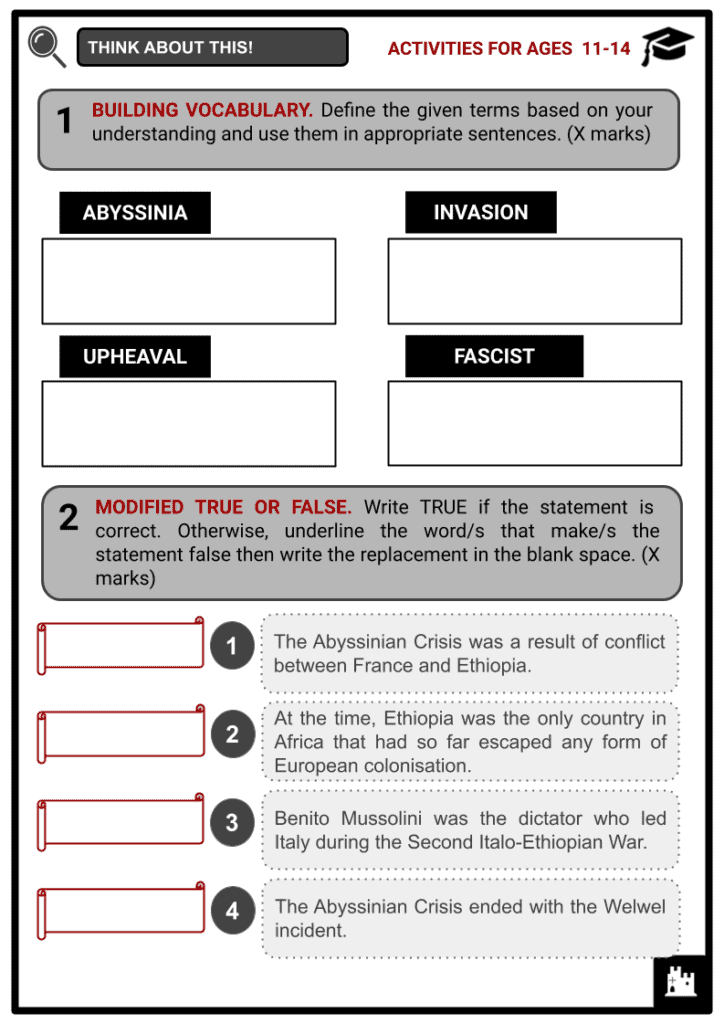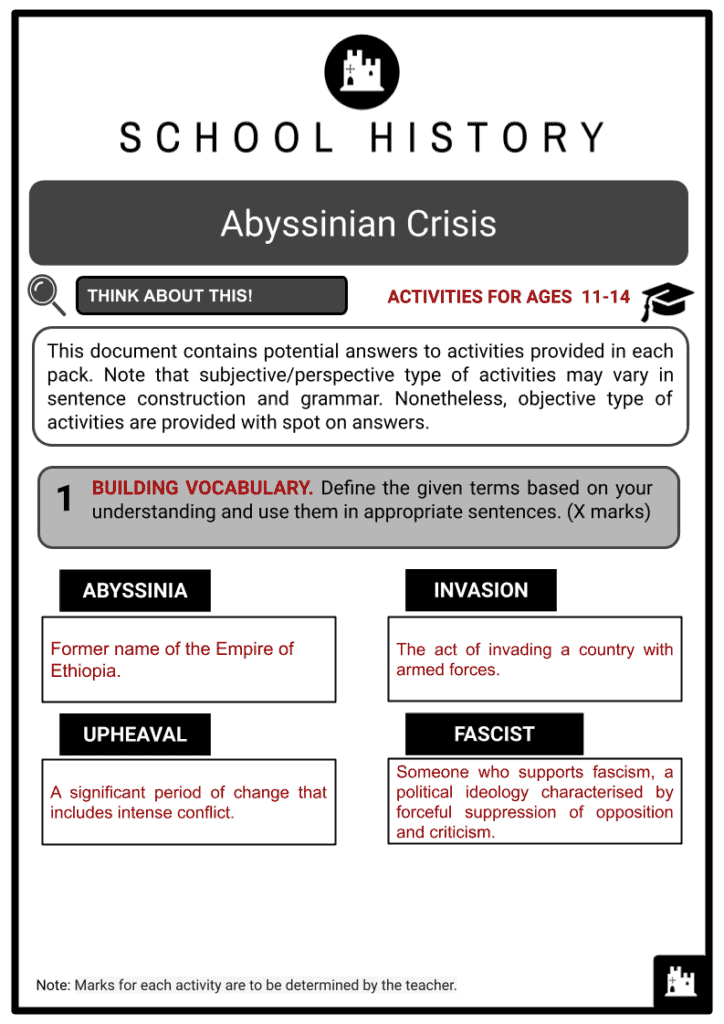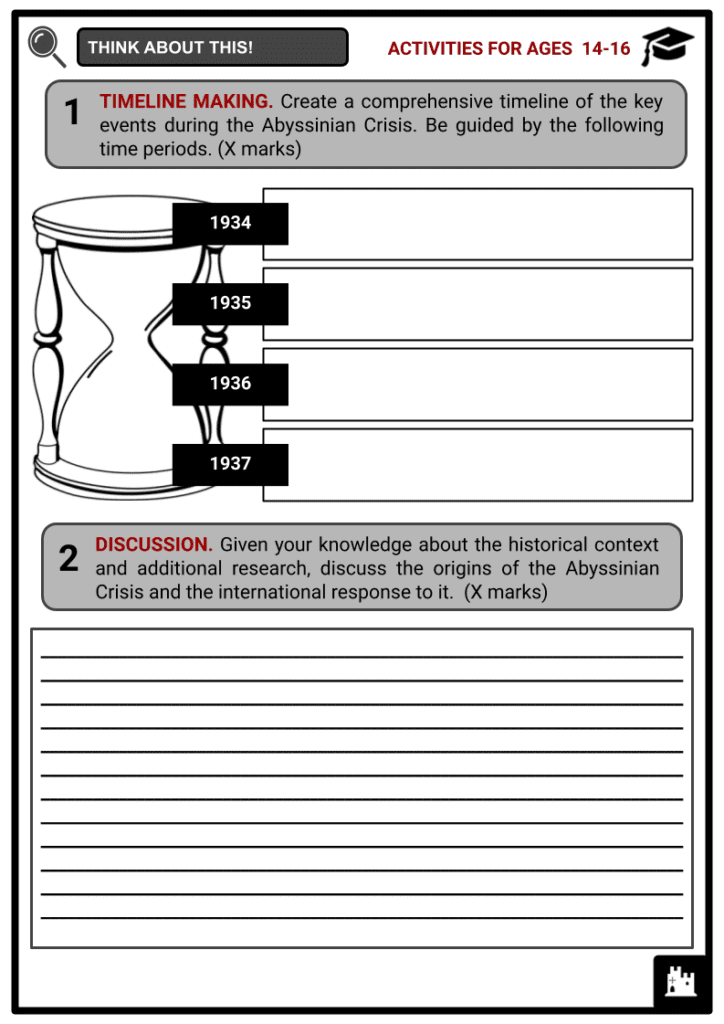Download The Abyssinian Crisis
Do you want to save dozens of hours in time? Get your evenings and weekends back? Be able to teach The Abyssinian Crisis to your students?
Our worksheet bundle includes a fact file and printable worksheets and student activities. Perfect for both the classroom and homeschooling!
Table of Contents
Add a header to begin generating the table of contents
Summary
- Background of the Abyssinian Crisis
- Introduction to the Welwel incident
- Parties involved in the Abyssinian Crisis
- Causes and effects of the Second Italo-Ethiopian War
Key Facts And Information
Let’s find out more about the Abyssinian Crisis!
- The Abyssinian Crisis was a result of conflict between Italy and Ethiopia, which was known as Abyssinia.
- The League of Nations could not do anything to prevent it. It was the first stern test for the League of Nations, which had not been in existence for a long time. Italy was feeling vengeful for the defeat that they had earlier suffered in Adowa.
- The Abyssinian Crisis was a diplomatic crisis that took place between 1934 and 1937 over Italy’s policy of aggression against Ethiopia.
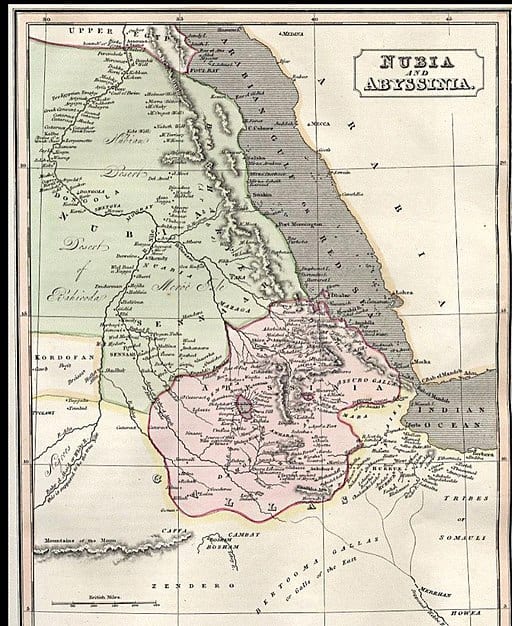
- It originated as a result of the Welwel incident of 22 November 1934, which marked an acceleration of the ongoing conflict between the Kingdom of Italy and the Empire of Ethiopia (then known as Abyssinia in Europe)..
- It had the direct effect of undermining the credibility of the League of Nations and encouraging fascist Italy to ally itself with Nazi Germany.
- The crisis contributed to a lack of peace in Europe through the progressive constitution of two opposing sides.
- The Second Italo-Ethiopian War, or the campaign of Abyssinia, was an armed conflict between fascist Italy led by the dictator Benito Mussolini and the Ethiopian Empire of Haile Selassie I, from 3 October 1935 to 9 May 1936.
- It was part of Italy’s second attempt to seize the East African country after the defeat of Adowa in 1896, which made the country one of the last free countries in Africa.
- Ethiopia and Italy were then members of the League of Nations, which – according to its charter – served to ensure the prevention of wars through the principle of collective security.
- The outbreak of this war marked the withdrawal of Italy from the League of Nations and its diplomatic, political and strategic realignment with Nazi Germany.
- At the same time, the failure of the international organisation to prevent the Italian invasion discredited the League of Nations on an international level on the eve of the Second World War.
- Armed resistance to the Italian occupation lasted until 5 May 1941, the date of the liberation of Addis Ababa at the end of the East African campaign by the British colonial forces in the north and the Belgians in the south.
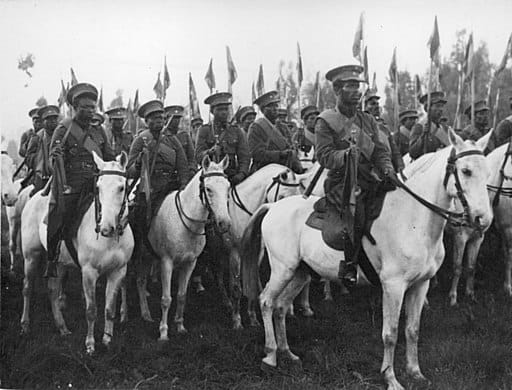
The intention of Benito Mussolini to invade Ethiopia
- On 2 October 1935, Benito Mussolini announced his intention to invade Ethiopia on a false pretext.
- Ethiopia, an African country also called Abyssinia, was ruled by an emperor, or Negus, named Haile Selassie I. A Christian of the Coptic rite, like the majority of his subjects, he flattered himself with the myth of descending from the Queen of Sheba and the King of Israel Solomon.
- Ethiopia was the only country in Africa that had so far escaped any form of European colonisation. It was even a member of the League of Nations since 1923. Thus, everything started from a diplomatic game.
- On the pretext of an assault on Italian inspectors a few months earlier (23 November 1934) on the borders of the Italian colony of Somalia and Ethiopia, Mussolini felt he had the right to go much further.
- Negus Haile Selassie I reacted by denouncing an invasion of Italian soldiers in Welwel, a hundred miles within its borders. He shocked the League of Nations.
- The Italian dictator wanted to offer his country a colonial empire “worthy of its rank” and had no alternative but to attack the only African state that was not under any European colonisation.
- The League, whose mission was to maintain peace among its members, was being tested for the first time in its existence. It appointed an arbitration board. It referred the two complainants back to back on 3 September 1935. But the Italian Duke did not care about the Negus’ opinion! He was determined to invade Ethiopia.
- He also wanted to avenge the humiliating defeat of the Italian armies against the Ethiopian Negus Menelik in Adoua on 1 March 1896.
- Thus on 2 October 1935, the Duke addressed a warlike speech to the Italians and announced its decision to invade Ethiopia. The next day, at his command, ten divisions supported by tanks and aviation – a total of over 300,000 men – rushed to Ethiopia and took it from the Italian colonies of Somalia and Eritrea.
Origins and causes of war: National contexts
- In the first decades of the century, both Ethiopia and Italy were experiencing major political upheavals.
- The death of Menelik II was followed by a political crisis and the coming to power of his grandson, Ledj Iyasu, in a tense atmosphere.
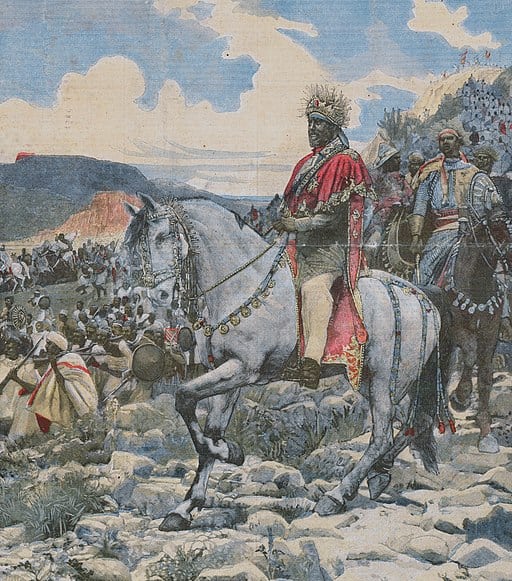
- Since the mid-twentieth century, Ethiopia had entered a period of centralisation and modernisation. This process accelerated towards the end of the reign of Menelik II (1889-1913).
- Criticism of the conditions of succession, questions over religious policy, and antagonism towards neighbouring colonial powers (Italy, France and the United Kingdom) marked his reign of three years.
- It ended with a coup d’etat supported by the
Ethiopian Orthodox Church and
part of the nobility. - On 27 September 1916, Zewditu I became the leader of the Empire. Nevertheless, the sovereign had to deal with Teferi Mekonnen, future Haile Selassie I. The Ethiopian court of the 1920s was the scene of opposition between the so-called conservative party, represented by Zewditu, and that of the progressives, led by Teferi.
- The two personalities managed to co-exist. Various reforms, supported by the progressives, were adopted. They included the abolition of slavery, socio-economic modernisation and openness to the outside world, symbolised by the country’s accession to the League of Nations in 1923.
- This process continued after 2 April 1930 when Haile Selassie I came to power. However, these centralisation efforts were to come up against the more aggressive policy of the Italians, particularly in the region of Ogaden, the province where the Welwel incident took place in 1934.

